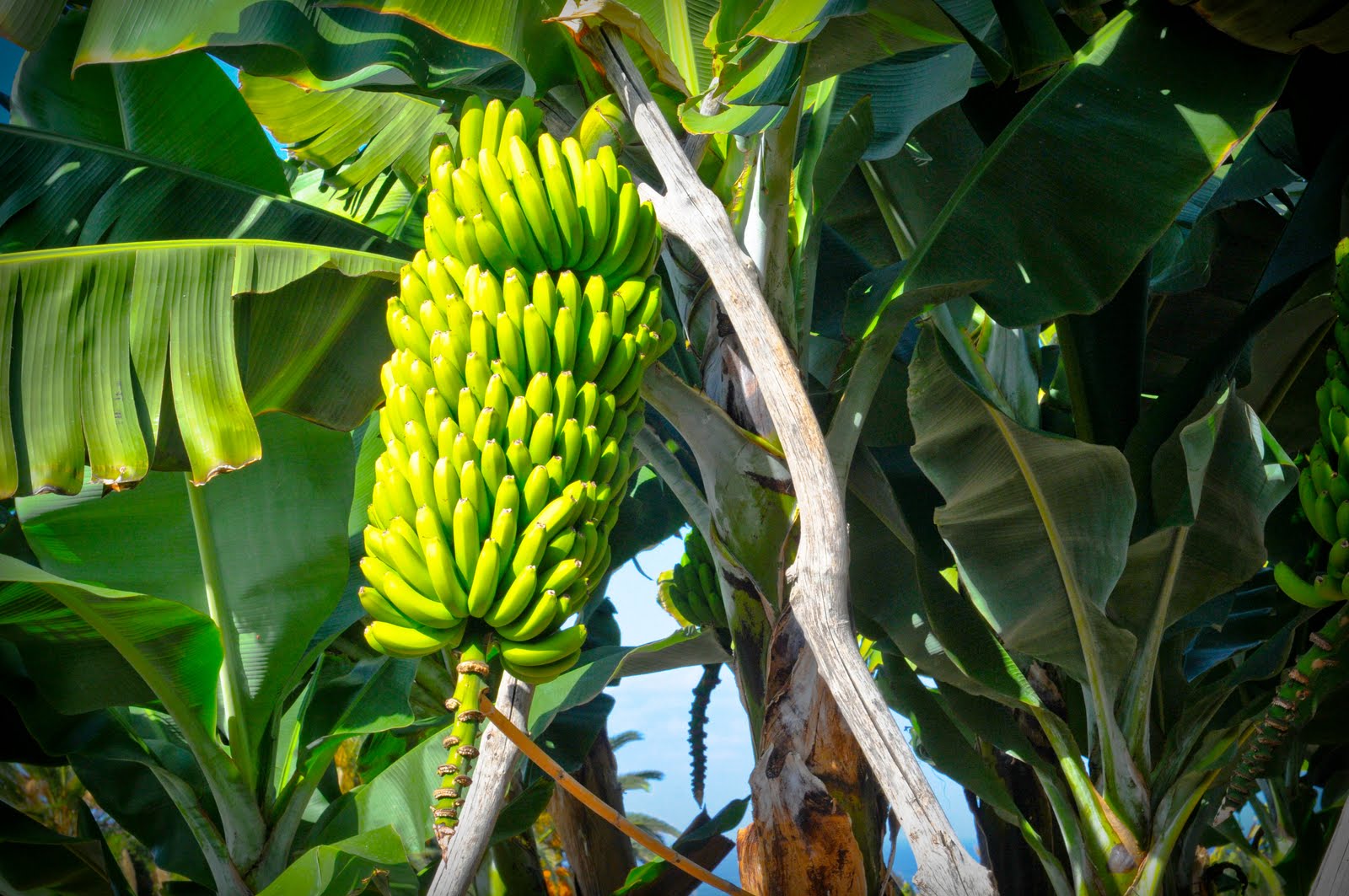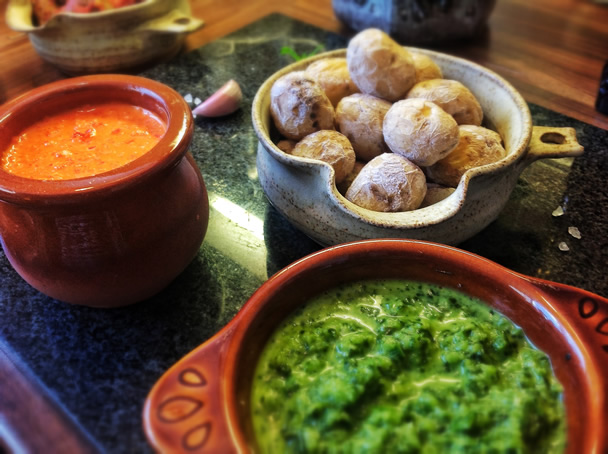
Every corner of Tenerife hides a unique ingredient that makes its cuisine truly tempting. The sea and the warm climate allow Canary Islanders to cultivate a wide variety of fruits and vegetables. They are two of the main ingredients in Tenerife cuisine. Fish and bananas are the big stars, but the island's menu has much more to offer.
As on all islands, fish is an essential element in Tenerife's cuisine. The most popular is la vieja (scarus cretensis), a white coastal fish with a mild flavour and can be found all year round. It is prepared battered, grilled or stewed with potatoes and served with spicy and green mojo sauces. Cherne (grouper) is also very popular; it is sold salt-cured and then desalted, just like cod, although it is also eaten fresh or grilled, with papas arrugás potatoes and green mojo sauce. The sea also offers us the ingredients for an exquisite fish stew, prepared with raw or fried fish and then cooked with potatoes, onions, tomato and peppers. Another delicious option is tuna, served marinated, grilled, as a carpaccio or with onions. The selection of seafood is rounded out with salted fish: redbanded seabream, white seabream, grey mullet, white seabass and mottled grouper.
Tenerife has exceptional wine to pair with the taste of the sea, with its five designations of origin: Tacoronte-Acentejo, Ycoden-Daute-Isora, Valle de La Orotava, Valle de Güímar and Abona, which together bottle more than five million litres every year. A a true pleasure for the palate.
Throughout the Canary Islands archipelago, potatoes (or as locals call them, papas) are an essential ingredient. They are used for vegetable stews, casserole dishes and especially as sides for meats and fish. It is no wonder, given that up to 46 different varieties of this tuber have been counted on the islands. These include the papa negra, which is only grown in Tenerife, and those known as papas bonitas, which may be white, coloured or black and are famous for their flavour and quality. Also popular are papas arrugás, or wrinkled potatoes, which are cooked in their skin with lots of salt (some even prefer to use seawater) and taste amazing. Although papas arrugás are the most famous, there are up to 46 varieties of Canary Islands papas.

Another star Tenerife food product is, of course, mojo: a sauce that accompanies many recipes and is used as a complement to some main dishes. There are as many mojos as you can imagine (perhaps nearly a hundred) but there are four truly traditional recipes: colorado picón (with hot chilli or chilli pepper), colorado dulce (with mild palm peppers), verde (with cilantro), and almagrote (always made with a mature, hard cheese). Spread on toast it makes an excellent starter.
Gofio is a direct legacy of the indigenous people who inhabited the islands: the Guanches. It is a flour made from toasted grains - mostly barley, wheat and corn - along with pulses like chickpeas or broad beans. It can be served blanched or mixed with fish, meat or vegetable broth. It is the perfect pairing for dishes like fish stew or sancocho (a soup made of meat, tubers and vegetables). You can also eat it with raw onion slices. And powdered gofio is even added to milk for breakfast. Mixed with flour, it is ideal for biscuits, sponge cakes, ice-cream and even mousses.
It would be impossible to think about Tenerife cuisine without mentioning the banana, one if its most cherished products and a frequent ingredient in the island's cookbooks. You would be surprised at how many recipes this fruit can be added to. We find them in starters, such as the Canary Island banana salad with leaf shoots and dried fig vinaigrette; or in Cuban-style rice sushi with bananas. It also shows up in main courses like chicken dishes.
And, what about desserts? A flambé Canary Island banana with cinnamon and rum or a banana and pear cream custard with chocolate caramel is hard to resist. How about a banana split? The Canary Islands version of the famous banana split is the perfect way to round off any meal on the island. Aproveche!